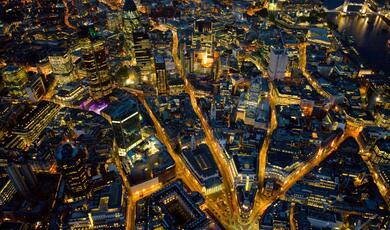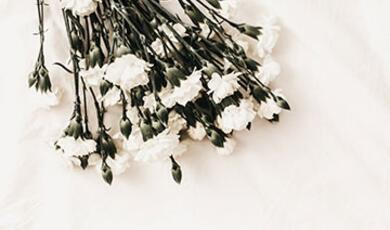The plumage of the naked ape
Share
- Details
- Transcript
- Audio
- Downloads
- Extra Reading
Tom Paine criticised Edmund Burke’s account of the French Revolution by saying that he pitied the plumage but forgot the dying bird. But it is often the plumage which defines the bird. The rituals and theatre of public life are a valuable indicator of the character of a political system.''
Download Transcript
The plumage of the naked ape.
Professor Rodney Barker
Tom Paine criticised Edmund Burke’s account of the French Revolution by saying that he pitied the plumage but forgot the dying bird. But it is often the plumage which defines the bird. The rituals and theatre of public life are a valuable indicator of the character of a political system.
1. The plumage of the naked ape
Tom Paine criticised Edmund Burke’s account of the French Revolution by saying that he pitied the plumage but forgot the dying bird.
*1 PICTURE Louis XIV by Hyacinth Rigaud
Desmond Morris in 1967 described humanity as a naked ape. But what distinguishes humans from other animals is that they are clothed, and the clothes, and all the other manufactured, constructed, and cultivated things with which we surround ourselves, are essential symbols of status, function, and authority. The remarkable thing about the Naked Ape is that there are possibly only two examples of the species, Adam and Eve, and even they did not remain without clothing for long. The transition from the Garden of Eden to the post-paradisiacal world was marked by the putting on of clothes. Before their expulsion, they were provided with garments made of skins, thus marking them off from all the other animals of creation: other animals wore their own skins, humans decked themselves in other people’s, or other animals. And not just skins, but buttons and bows, cloaks and hats, and all the manufactured and constructed and cultivated artefacts which constitute human civilisation.
2. Clothes construct the social person
Clothes make the person, both for themselves and for others.
There may, or not, be an inner self so that we can indeed say of someone that deep down they are superficial. But it is the outward construction with which we deal, and which constitutes, for social life, who we are.
*2 PICTURE , and Louis XIV by Thackeray
The rituals and theatre of public life are an external show, but that show communicates important messages about the meaning to be attributed to other ways in which people give an account and a justification of themselves and the roles they perform. In Woolf’s case, it was to draw attention to the concealed or unacknowledged importance of gender distinctions in public life. Men, who in other respects distinguished themselves from women by the unimaginativeness of their dress, their dark suits and subdued colours of shirts and ties, were quite different in their roles as the arbiters of state, as judges, vice chancellors, bishops and generals, and were decked out with more feathers and frills and buttons and bows than could be found in the most extravagant display of ball gowns.
But as Virginia Woolf recognised in her account of the finery of office, it is often the plumage which defines the bird.
*3,4, 5,6, 7 PICTURES from Three Guineas
Dress tells us about how leaders see themselves, and how they see us. It tells us, too, a great deal about how we construct and cultivate our own identities.
Even when there is no one else about, the material construction and cultivation of identity goes on.
Robinson Crusoe showed himself civilised by means of a hat
Dress is not an option, and it is both defended and sometimes threateningly asserted in its most minute detail: Orlando’s housekeeper’s wedding ring
Don’t step on my blue suede shoes
3. Religion: The role of clothes in expressing religious identity, both to ourselves and to others. The argument about headscarves in France and in Turkey, and about the jilbab in the UK, is about who we are, both for ourselves and for others. It may be religious faith which expresses some particular obligation, but the form of the compliance with that obligation is social, not private or spiritual.
4. Politics: A conservative might wear red braces, but would be unlikely to wear a red shirt. And yet it is on the face of it astonishing that so much significance should attach to the colour of items of clothing. But it has always been so. Colour is an immediate and simple way of signalling allegiance to a party, country, faith or family.One of the first things that the states of Europe did when they began putting their ordinary soldiers in uniform from the seventeenth century onwards, was to select distinguishing national colours: blue and yellow in Sweden, white in France, Red in Britain
When it came to revolutionary change, the identity constructed by clothing mattered even more:
a 'Diffferent costumes indicated different politics, and a color, the wearing of a certain length of trousers, certain shoe styles, or the wrong hat might touch off a quarrel, a fistfight, or a general street brawl. During the Revolution, even the most ordinary objects and customs became political emblems and potential sources of political and social conflict. Colors, adornments, clothing, plateware, money, calendars, and playing cards became "signs of rallying" to one side or another. Such symbols did not simply express political positions, they were the means by which people became aware of their positions. By making a political position manifest, they made adherence, opposition, and indifference possible.’ (Hunt 53)
b National identity: Kemal Attaturk and the fez.
5. Clothing can be used against states or by them
The careful use of clothing can both be a way of asserting particular identity against a homogenising imperial state or a dominant group or class, or of a central state which wishes to recruit more effectively the loyalties of separate or distinct culture.
* 8 PICTURE The tartan, which in the eighteenth century had been associated with Jacobitism and the rebellion of Prince Charles Edward Stuart and was hence banned became, in the nineteenth century, and expression of royal affinity with the monarchy’s Scottish subjects.
6. It’s not just clothes, but scenery too. Plazas and palaces, the construction of public and private space
. The idea that a house is a machine for living in, the modernist, rationalist, Corbusier conception of building, gets only a part of what is going on. Houses, offices, and palaces are also theatres where the public drama is acted out.
Ian McKellen’s Richard III, the choice of buildings tells us what kind of a ruler he is. Those of us who always suspected that Senate House had something of the fascist opera house about it, had our suspicions confirmed.
* 9, 10, 11 PICTURES
Lutyen’s New Delhi, completed in 1931
* 12 PICTURE Corbusier’s/Jane Drew’s Chandrigarh
Chandrigarh, the state capital of the Indian Punjab, despite being part of a formal democracy, said more about the independent authority of rulers than about the rights or participation of citizens, with ‘pedestrian resistant’ expanses of plaza. i
* 13, 14, 15 PICTURE Brasilia similarly, was constructed in a way which ‘effectively discouraged mass involvement’.
* 16 PICTURE Hitler’s Reich Chancellery, the vast spaces to be traversed before reaching the Fuhrer’s office, though office was a very inadequate term
Shops may, with their warm blast of air just at the front door, say ‘come in’, but government buildings more frequently say ‘keep out’ or ‘you don’t belong here’
* 17, 18 PICTURE Norman Foster’s new Reichstag building in Berlin, and City Hall in London, are therefore interesting attempts at a different statement, displaying the offices of bureaucrats and the deliberations of legislators to the public gaze (whilst safely keeping the public behind glass)
7. Walking the walk
Even how we move about expresses our cultural and political identity
Walk, not bloody likely, I’m going in a taxi. How you travel and who you are
In Japan, the wedding of the then Crown Prince Akihito in 1959 was followed by an open horse drawn carriage drive through Tokyo, another break with a tradition which had conveyed members of the imperial family in closed palanquins.(Ruoff 222) The presentation is of a royal family who are not only visible to the public, but receiving the approval, support, and acclamation of the public. That is something an absolute ruler, and even more so a semi-divine one, not only would not need, but would be compromised by seeking or receiving.
Elected leaders walk or cycle, dictators run or ride
The Twentieth Century American poet Wallace Stevens made the point succinctly:
‘I am what is around me…
One is not a duchess
A hundred yards from a carriage.’
Theory (1923)
Different kinds of royal yachts, different kinds of planes, express different images, different claims to importance.
When pollsters (which pollsters?) ask respondents to compare politicians to cars, they are employing an important insight. John Prescot is someone who has two jags. This is, after all, a point that advertisers take for granted and which, if it were not so, would condemn most advertisements for cars as a waste of money. You are not just someone who happens to own a Mercedes Super Shogun; you are a a Mercedes Super Shogun kind of person.
8. How we speak: And language, too, is important, from the existence of separate languages for the ruling class or caste – Mandarin, Norman French – through the dialects of class to multicultural equality in countries such as the late twentieth century United Kingdom.
Words are important. The historian Lyn Hunt records how in the French Revolution ‘Words associated with the Old Regime, names tainted with royalism, aristocracy, or privilege, became taboo. Procureurs andavocats (Old Regime legal types) became hommes de loi (simple "men of the law") if they wanted to continue legal practice; impôts were replaced with contributions, which sounded more voluntary.' (Hunt 20). The French Revolution was not unique in this respect. It is only recently that we have seen the same procedure at work, whereby train passengers became customers
The origin of the term ‘shibboleth’ illustrates how very important indeed the way you speak can be. The Book of Judges chapter 12 records how in fighting between the tribes of Gilead and Ephraim, fleeing Ephraimites tried to pass themselves off as members of the tribe of Gilead, so were asked to pronounce ‘shibboleth’. Those who could only manage ‘sibboleth’ were killed as enemies posing as friends. Saying serviette rather than napkin was never so perilous.
But the way in which we speak still sends important signals of friends and enemies, people like us, and people who are regarded at best as different and at worst as hostile.
Changing the way you speak changes who you are, or who you are publicly. So, in Shakespeare’s King Lear, when Edgar wished to conceal his identity from his blind father, he adopted a rustic accent.
9. It’s even what we eat. The insults in Salman Rushdie’s Midnight’s Children between Indians and Pakistanis are couched in terms of their respective diets.
A old insult to the English was to call them ‘les rosbifs’, just as for Hogarth (?) it was precisely the roast beef of olde Englande that expressed so much about our national character
In Vichy France, alienation from the Petain regime and support for the maquis greatly increased when the regime contaminated wine in June 1943 as part of their intention of requisitioning wine for fuel alchohol. 'More than any rational arguments, more than any patriotic explanation, these glasses of heating oil adulterating a fine Pouilly-Fusse swung the winegrowers of the Macon hills to the Resistance'.
10. Fit for a king
Clothes, and methods of transport, the way we speak and the buildings within which a person moves, constantly tell stories about who people are. If they are rulers, it tells stories about their magnificence, the nature of their authority, their difference from or similarity to ordinary people, and their power
Shakespeare’s King Lear put it more acidly:
Thou hast seen a farmer’s dog bark at a beggar?
…And the creature run from the cur? There
thou might’st behold
The great image of Authority:
A dog’s obey’d in office.
Thackeray’s cartoon makes a point which was well appreciated by those who celebrated and maintained monarchy in medieval Europe. The clothes might express the King, but they expressed at the same time something that was more than the mortal person who wore them.
* 19 PICTURE The King’s two bodies. Archbishop Chichele in Canterbury Cathedral, 15th century. This perception was expressed in the ritual and statuary of funerals, where the separation of the mortal person from the continuing role of king was portrayed by two effigies, one mortal and passing, the other formal and continuing.
When Frederick William the 1st of Prussia is reported as having said ‘no, I will die in my uniform’ he was missing the point of kingship. Even if the king did indeed die in his uniform, there was, at the point of death, a separation. The mortal king was entombed, the uniform continued, and the museums of royal Europe were endowed with the clothing which expressed the continuation of the office of monarch long after the death of any particular incumbent
The person and the personage
The distinction between the person and the presentation can have dramatic and sometimes fatal consequences:
Captain of Koepenik the uniform was what mattered and defined its wearer
Don Giovanni & Leporello, vs Masetto: You are what you wear, and by exchanging clothes, you exchange public personage.
Ivan the Terrible (repeated in Shekhar Kapur’s film on Elizabeth I
11. This is why we argue about them, and why revolutions are so sartorially perilous
Dress and the French revolution: Comte Horace de Viel-Castel, writing after the collapse of the revolution, in 1834, commented that ‘the crime oflèse-costume, if one can so describe it, was a crime expiated on the scaffold.’ (Wrigley 1)
12. That is why a society of nudists is impossible. The dilemmas of an egalitarian society, and the novel role of brand labels (since you can’t tell one car or one suit from another, look at who made them and distinguish in that way). Mass clothing leads to an aspiration towards distinctiveness. As Sara Melzer and Kathryn Norburg, two historians of eighteenth century France, comment on the reaction against aristocratic and monarchical distinctions of dress in the French Revolution, 'the revolutionaries were united when it came to condemning the old sumptuary legislation. No distinctions in dress, like the noble sword or the clerical collar, would be allowed to undermine the equality of men. but "dressing for equality" foundered in practice, first on gender and then on politics. Revolutionaries never really wanted to sweep away all distinction of dress. Bodies, they believed, needed to bear visible signs that conveyed political allegiance. Bodies without signs were unreadable and therefore suspect or dangerous.' As one contemporary put it in 1794, there was a need to move beyond the practices and fashions of 'the empire of despots' where dress had been 'an object of representation, directed by fantasy, appropriated by pride'. Instead of distinguishing rank and wealth, it should indicate only public function and respect 'the sacred basis of equality'.(Wrigley 79) Squaring the circle indeed.
The citizen had two bodies, just like the king.
Equality and hierarchy in politics and society. Whenever equality is established, there is immediate effort to make distinctions within it. All animals are equal, but some are more equal than others.
The problem about the inner man or the inner woman, is that they are invisible. The outside is all we have to go on. And when one distinction goes, another arrives.
Conclusion
Never be dismissive about ‘mere appearance’. If you know the house, and the office, and the wardrobe and the breakfast, you are getting close to the whole public person. And since for most of the time, in order for orderly relations with the rest of humanity to occur, we need swift and unambiguous signals, we use them and read them. It is what makes us the clothed ape.
i Lawrence J. Vale, Architecture, Power and National Identity (New Haven:Yale University Press, 1992), p.113.
© Professor Rodney Barker, Gresham College, 31 October 2006
This event was on Tue, 31 Oct 2006
Support Gresham
Gresham College has offered an outstanding education to the public free of charge for over 400 years. Today, Gresham plays an important role in fostering a love of learning and a greater understanding of ourselves and the world around us. Your donation will help to widen our reach and to broaden our audience, allowing more people to benefit from a high-quality education from some of the brightest minds.


 Login
Login







